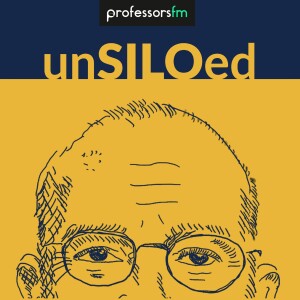
Distinguishing Cultural Learning from Social Learning feat. Cecilia Heyes
 2022-03-09
2022-03-09
Most people agree that nearly everything human is a mixture of both genetic inputs and cultural inputs. The question is about where the dividing line lies.
Cecilia Heyes is a senior research fellow in theoretical life sciences and a professor of psychology at All Souls College at the University of Oxford. She also authored the book “Cognitive Gadgets: The Cultural Evolution of Thinking.”
Cecilia and Greg talk in depth about theory of mind from early childhood development to how it is interpreted across different cultures, and dive into the debate between nature and culture that's been around since the pre-Socratics.
Episode Quotes:Theory of the mind in different cultures:
We tend to call it theory of mind or mind reading, wherever in the world we find it. In fact, mind reading or theory of mind is our way of predicting behavior. Other cultures have ways of predicting and explaining each other's behavior which depend much less on the ascription of thoughts and feelings.
Imitation and caregivers:
So there is some evidence that people who when they were infants, their mothers were depressed, show a weaker capacity to imitate facial expressions and so on. A depressed person is less emotionally reactive to others.
So whereas typically parents will mirror the facial expressions of their infant. Inadvertently, they're giving the infant the opportunity to see what they, the infant looked like when they do something that feels like this. And that's the capacity which is crucial for imitation. You've gotta be able to map the feel onto the sight. And a parent mirroring back facial expressions is crucial to learning that. And depressed mothers quite understandably are doing less of that mirroring.
Learning imitation:
Dancers in particular, those wall mirrors which are very often in dance studios, mean that every move you make in that room, you feel yourself doing it as it were, you've got the internal feedback from the performance.
You can feel the muscles stretching and so on. And that is being correlated with the sight of yourself doing it from the outside. And it's that kind of experience, that kind of sensory motor correlation, which is building your capacity to imitate.
Guest Profile:
- Faculty Profile at All Souls College at the University of Oxford
- Professional Profile at The British Academy
- Cecilia Heyes on Twitter
Her work:
- Cecilia Heyes on Google Scholar
- Cognitive Gadgets: The Cultural Evolution of Thinking
More Episodes
Create your
podcast in
minutes
- Full-featured podcast site
- Unlimited storage and bandwidth
- Comprehensive podcast stats
- Distribute to Apple Podcasts, Spotify, and more
- Make money with your podcast
It is Free
- Privacy Policy
- Cookie Policy
- Terms of Use
- Consent Preferences
- Copyright © 2015-2024 Podbean.com






